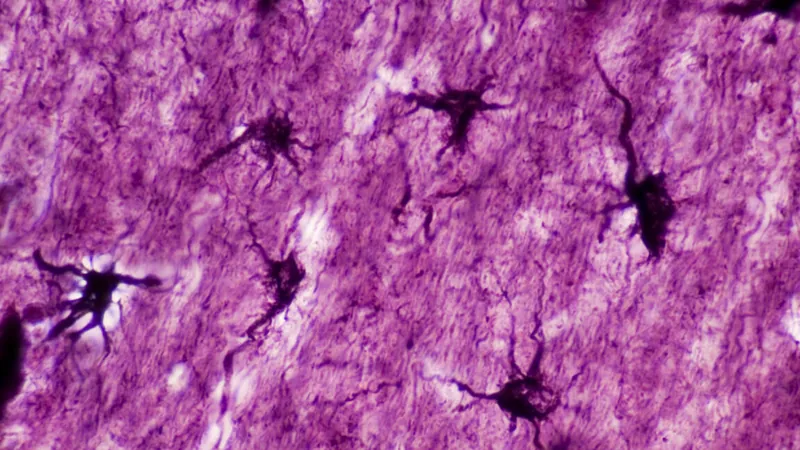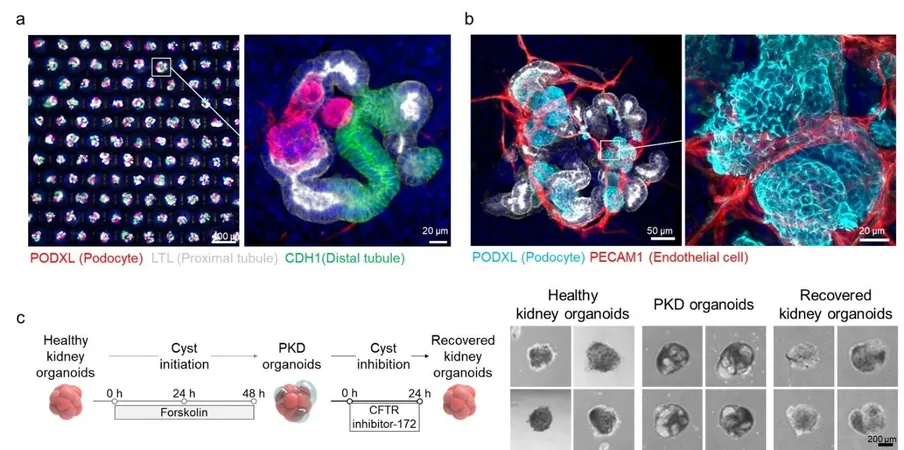
Astrocytes: The Unsung Heroes in Memory Formation Unveiling Groundbreaking Discoveries!
2024-11-23
Author: Jia
Astrocytes: The Unsung Heroes in Memory Formation Unveiling Groundbreaking Discoveries!
In a groundbreaking study conducted at Baylor College of Medicine, researchers have made a pivotal discovery about the role of astrocytes—star-shaped cells within the brain—profoundly shifting our understanding of how memories are formed and recalled.
Historically, the brain's memory storage has been attributed to "engrams," specific groups of neurons activated during learning experiences. However, new insights reveal that astrocytes not only support these neurons but play a critical role in both memory formation and recall. Michael R. Williamson, a leading researcher in the field, emphasizes that after two decades of research, there’s growing recognition of astrocytes as integral players in the storage of specific memories.
Astrocytes: A Closer Look
Astrocytes, often disregarded in the discussion of memory, have now been found to be capable of not only activating neurons but also engaging in specific memory functions. Williamson and his team developed innovative genetic techniques to identify and activate particular sets of astrocytes in mouse models, focusing on the c-Fos gene—a marker linked to memory formation.
The experiment involved a process known as "fear conditioning," where mice were exposed to a new environment and paired with mild shocks, leading to a learned fear response. By tagging active astrocytes during this training, researchers could pinpoint where memories were likely stored in the brain.
Memory Manipulation: The Next Frontier?
One startling consequence of this research is the potential for artificially manipulating memories by targeting astrocytes. For instance, scientists found that when they artificially stimulated the astrocytes involved in fear conditioning, the mice displayed fear responses even in neutral environments, indicating that astrocytes could be directly linked to memory recall.
Conversely, researchers were able to suppress memories by selectively disabling astrocytes related to specific memories. When the protein NFIA was deleted from these astrocytes, the conditioned mice exhibited significantly reduced fear responses, suggesting that although the memory wasn't completely erased, it became foggy and hard to access.
The Path to Future Treatments
These discoveries signal a future where astrocytes could be targeted for therapeutic interventions—especially for disorders like PTSD, where traditional memory retrieval can lead to distressing experiences. Future research aims to clarify how astrocytes communicate with neurons and whether these findings are applicable across different brain regions important for memory.
Williamson acknowledges the journey ahead: "We have a new cellular target we can evaluate and potentially develop treatments that target the astrocyte component associated with memory. The next steps will include investigating whether astrocytes perform similar roles in various brain areas crucial for memory processing."
Stay tuned as these discoveries pave the way for extraordinary advancements in neuroscience that could revolutionize how we understand memory and its associated disorders!




 Brasil (PT)
Brasil (PT)
 Canada (EN)
Canada (EN)
 Chile (ES)
Chile (ES)
 España (ES)
España (ES)
 France (FR)
France (FR)
 Hong Kong (EN)
Hong Kong (EN)
 Italia (IT)
Italia (IT)
 日本 (JA)
日本 (JA)
 Magyarország (HU)
Magyarország (HU)
 Norge (NO)
Norge (NO)
 Polska (PL)
Polska (PL)
 Schweiz (DE)
Schweiz (DE)
 Singapore (EN)
Singapore (EN)
 Sverige (SV)
Sverige (SV)
 Suomi (FI)
Suomi (FI)
 Türkiye (TR)
Türkiye (TR)